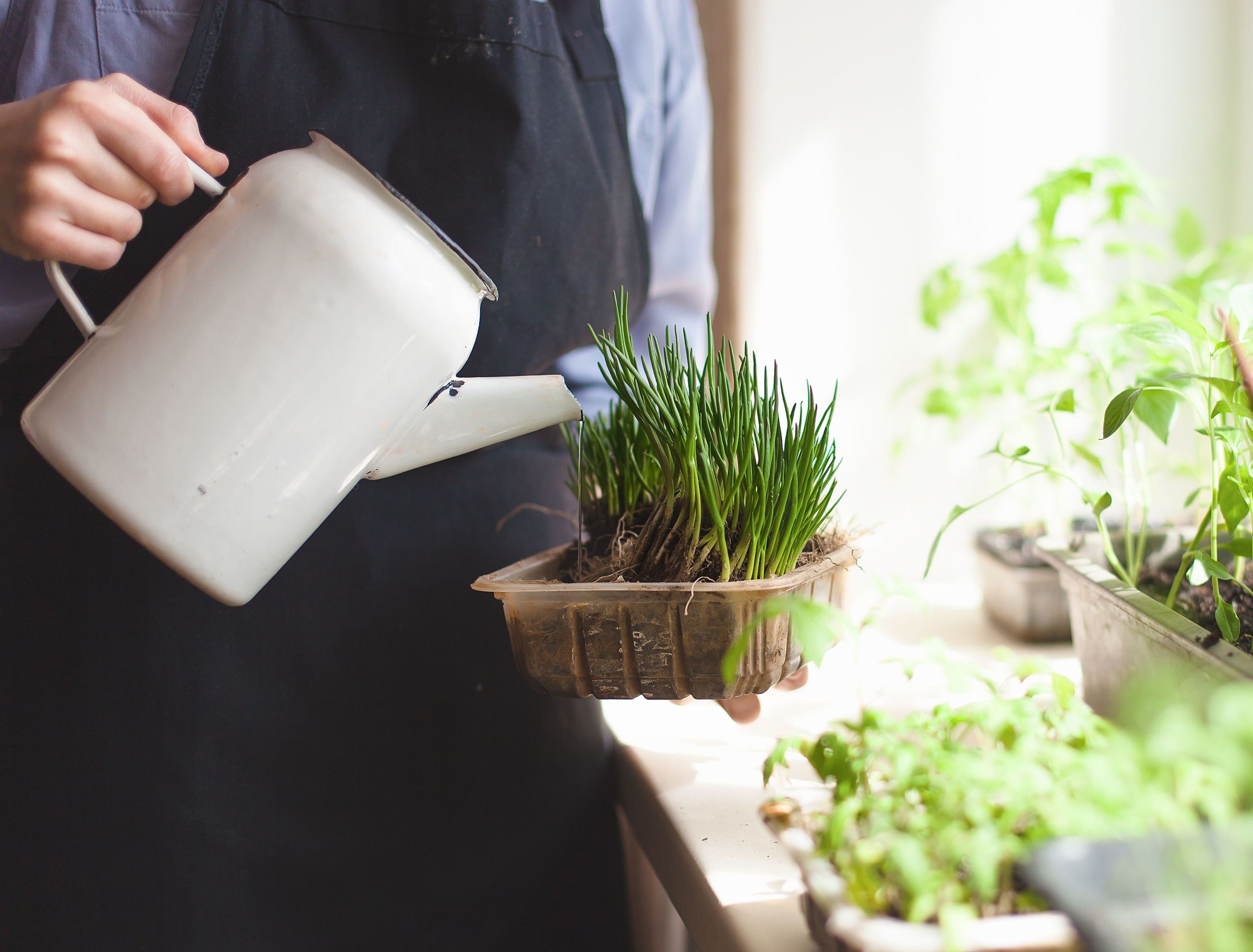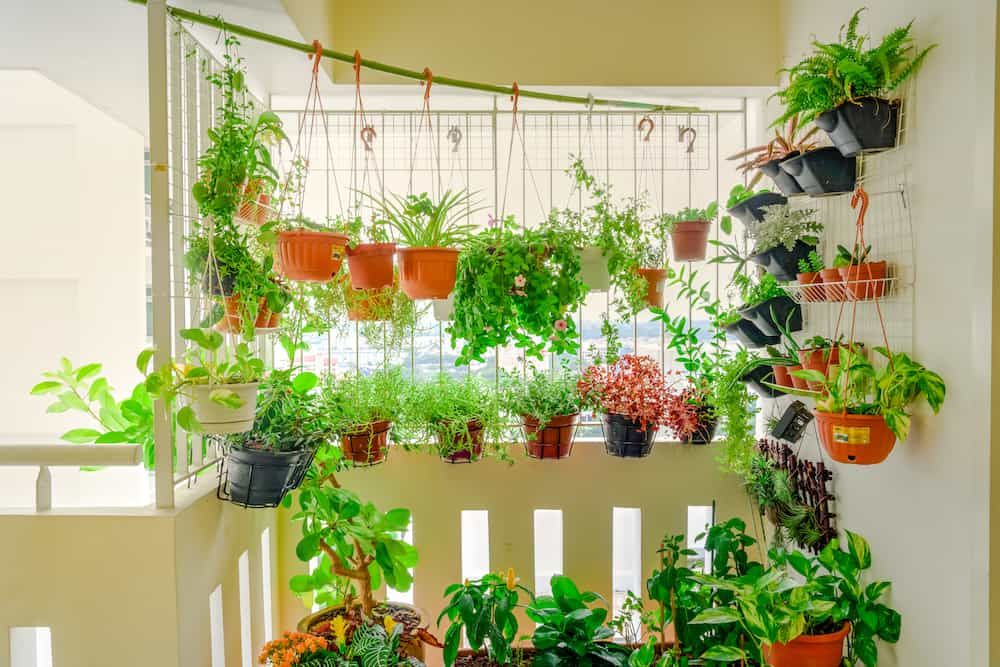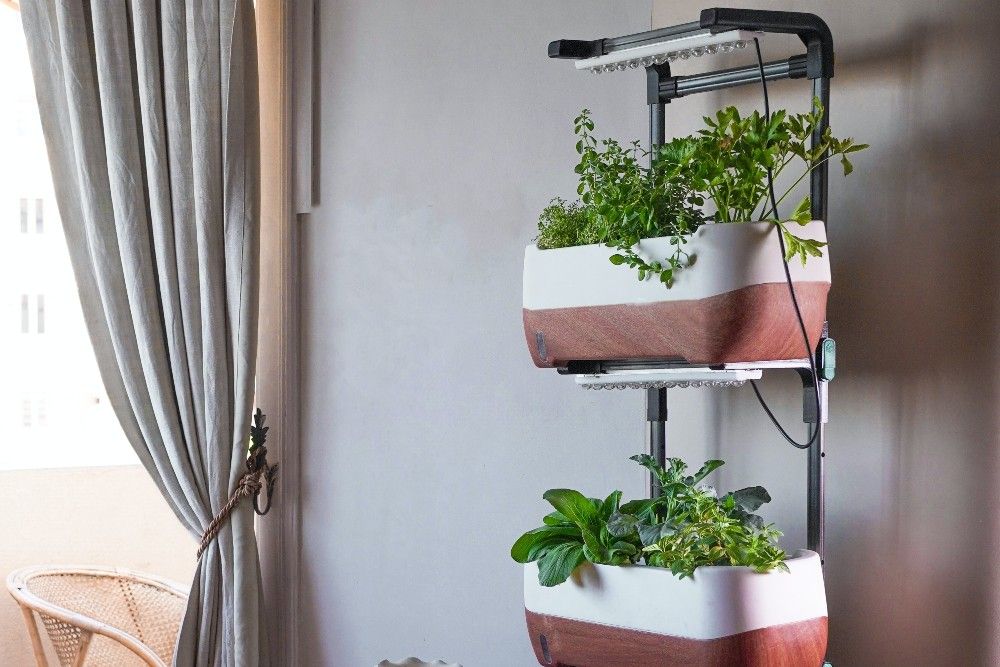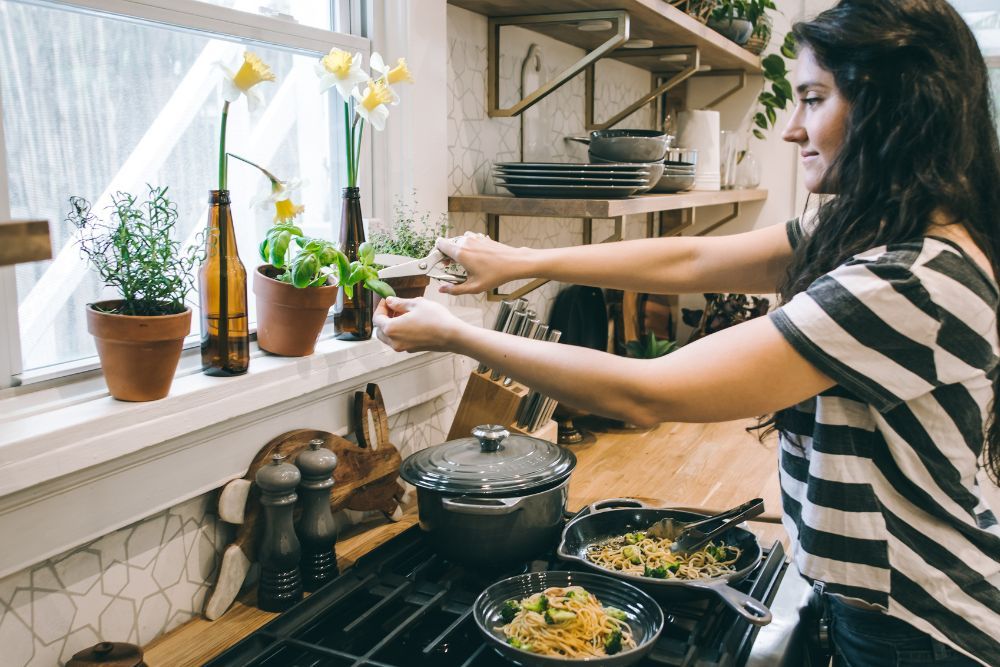Limited outdoor room or not, starting a garden isn't confined to large backyards and open spaces. With proper planning and optimizing your square footage, you can grow various plants in smaller spaces, like an apartment. The options are endless, from ornamental plants to flowers to fruits and vegetables.
Grow the garden of your dreams, no matter the available area! Whether you have a patio, balcony, or just a window sill to grow on, here are four ways to grow a garden in your apartment this spring.
1. Grow in Containers
Image credits: Geo-grafika via Canva
The most popular way to grow a garden in an apartment is by using containers. Similar to planting in the ground, most plants grow well in pots. Popular choices are lettuce, tomatoes, eggplants, cucumbers, peppers, and herbs. Of course, flowers and decorative plants also make a great addition to your apartment garden! Just make sure to do research on your specific plant or cultivar to ensure you're able to give it the proper care needed to thrive.
The most important thing to consider is growing the right fruits or vegetables in your container garden. Certain seeds are cultivated specifically for containers and are more compact plants that grow smaller. These plants are often referred to as bush or dwarf varieties. Pay attention to what type of seeds you buy, and always check the label to ensure it's container-friendly.
Next, choose the right size container for the plant you grow. A general rule of thumb is 6 to 9 inches deep for shallow-rooted vegetables like lettuce, spinach, green onion, and radish. Grow moderate-rooted vegetables like peppers, eggplant, beets, and carrots in pots 12 to 18 inches deep. And deep-rooted vegetables like tomatoes, potatoes, zucchini, and cucumbers should grow in containers at least 18 to 24 inches deep.
The best containers are terra cotta, clay, ceramic, plastic, or wood. Avoid using metal containers that can heat up in the sun and dry out faster. When you use wood, opt for a naturally rot-resistant type like cedar or redwood.
2. Grow Plants Vertically
Image credits: Trong Nguyen via Shutterstock
One way to take advantage of a small space is by growing your plants vertically! If you have a patio or balcony in your apartment, vertical gardening is a great alternative to maximize your space. This gardening method allows you to grow plants upwards, sometimes trailing up a wall or fence.
Create a vertical garden by purchasing a structure from a garden center or assembling one yourself. Popular designs include wooden pallets with grow bags, hanging baskets, or stacking multiple shelves for pots to sit on. There are also freestanding plastic planters available for purchase which you can tuck away into the corner of your patio.
The best plants to grow vertically are typically vining plants such as indeterminate tomatoes, cucumbers, peas, beans, melons, and squash. Shallow-rooted plants like some herbs, lettuce greens, green onions, and radishes do particularly well in vertical structures. On top of this, garden plants like roses, ivy, or pothos add a decorative touch to your indoor garden as well -- You can even train them to climb.
Not only do vertical gardens take advantage of otherwise unused space, but it also does wonders for your body! Gardening in the ground or raised beds can take a toll on the body, from frequent bending and kneeling to care for your plants. When growing vertically, tending to your plants is easier and more accessible.
3. Grow in a Hydroponic Garden
Image credits: Altifarm Enverde via Pexels
If your outdoor space happens to be very limited or non-existent, try growing your plants indoors using hydroponics instead. A hydroponic garden uses only water to grow plants all year round. Plants grown hydroponically tend to grow faster, produce higher yields, and use less water than traditional plants grown in soil.
Most fruits and vegetables that grow outside can also grow indoors in a hydroponic garden. Consider planting herbs, lettuce, spinach, kale, tomatoes, peppers, or strawberries. It's best to avoid planting large vegetables like broccoli and cabbage or vining plants like cucumbers, peas, or beans. These plants grow too large for most hydroponic gardens, so only plant these if your system can handle their bigger size.
Are you wondering which hydroponic garden to buy? You can purchase hydroponic systems like Moistenland, iDOO, AeroGarden, or DIY one yourself!
4. Start a Kitchen Herb Garden
Image credits: Tina Dawson via Unsplash
Another way to grow in your apartment is by planting a kitchen herb garden indoors. This option is perfect for beginner gardeners or perhaps those who want a smaller garden.
Herbs like dill, basil, rosemary, thyme, and sage can grow in a few pots on your window sill. Place them in a bright location that receives at least six hours of sunlight a day, or supplement them with a grow light. You can also take advantage of companion planting and plant multiple herbs together in one container. Make sure to group herbs based on their water and sunlight needs.
Enjoy harvesting fresh and cooking with your homegrown herbs, or try drying and storing them instead! You can store dried herbs for roughly two to three years in an airtight container.
Create Your Own Apartment Oasis
Starting a garden in your apartment requires a little work and creativity, but reaping the rewards is worth it. Whether you want to grow houseplants, herbs, or fruits and vegetables -- don't let a small space confine you!
Have you tried growing a garden in your apartment? Leave a comment down below and share your experience.





